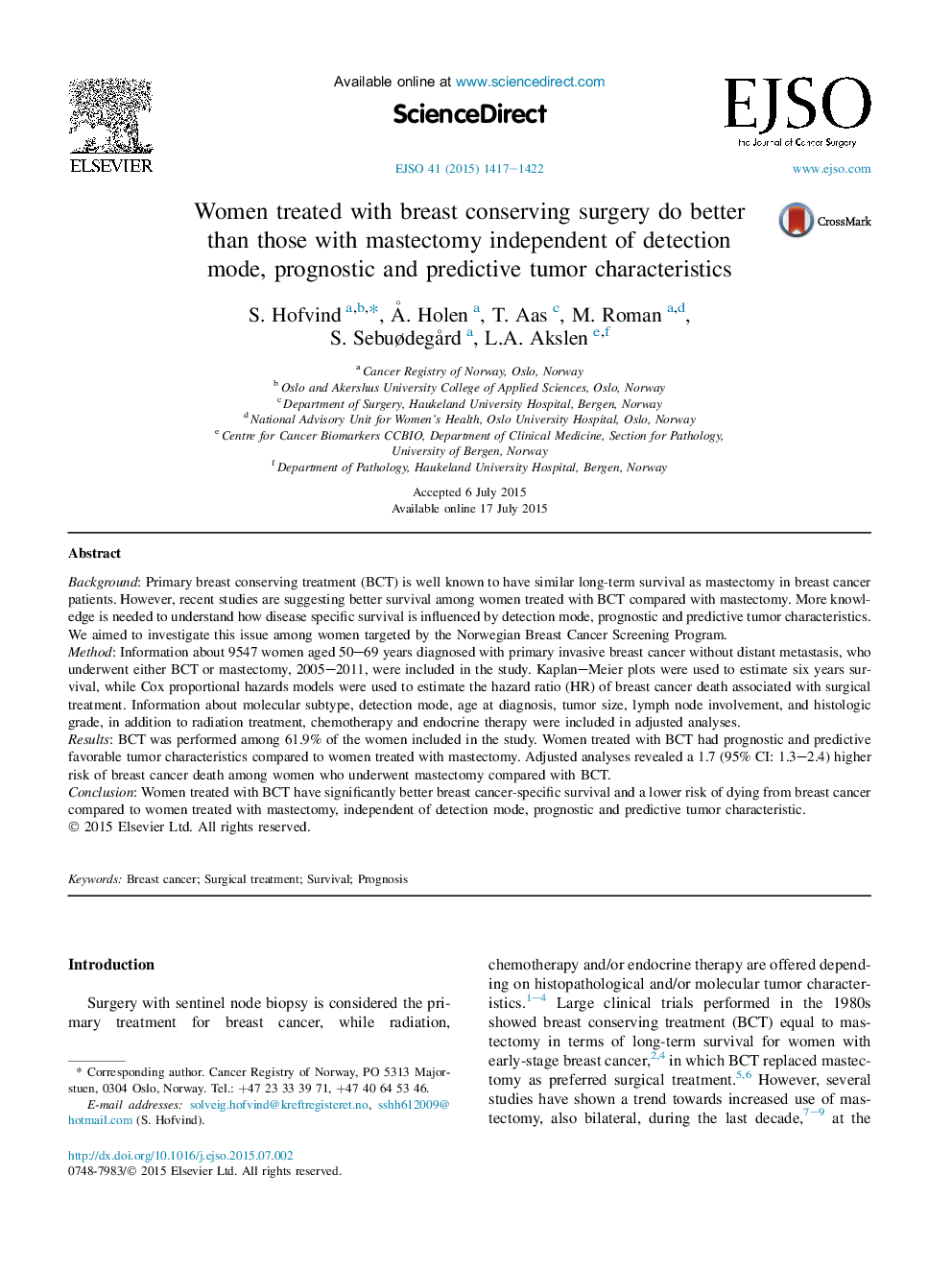| Article ID | Journal | Published Year | Pages | File Type |
|---|---|---|---|---|
| 6191148 | European Journal of Surgical Oncology (EJSO) | 2015 | 6 Pages |
BackgroundPrimary breast conserving treatment (BCT) is well known to have similar long-term survival as mastectomy in breast cancer patients. However, recent studies are suggesting better survival among women treated with BCT compared with mastectomy. More knowledge is needed to understand how disease specific survival is influenced by detection mode, prognostic and predictive tumor characteristics. We aimed to investigate this issue among women targeted by the Norwegian Breast Cancer Screening Program.MethodInformation about 9547 women aged 50-69 years diagnosed with primary invasive breast cancer without distant metastasis, who underwent either BCT or mastectomy, 2005-2011, were included in the study. Kaplan-Meier plots were used to estimate six years survival, while Cox proportional hazards models were used to estimate the hazard ratio (HR) of breast cancer death associated with surgical treatment. Information about molecular subtype, detection mode, age at diagnosis, tumor size, lymph node involvement, and histologic grade, in addition to radiation treatment, chemotherapy and endocrine therapy were included in adjusted analyses.ResultsBCT was performed among 61.9% of the women included in the study. Women treated with BCT had prognostic and predictive favorable tumor characteristics compared to women treated with mastectomy. Adjusted analyses revealed a 1.7 (95% CI: 1.3-2.4) higher risk of breast cancer death among women who underwent mastectomy compared with BCT.ConclusionWomen treated with BCT have significantly better breast cancer-specific survival and a lower risk of dying from breast cancer compared to women treated with mastectomy, independent of detection mode, prognostic and predictive tumor characteristic.
